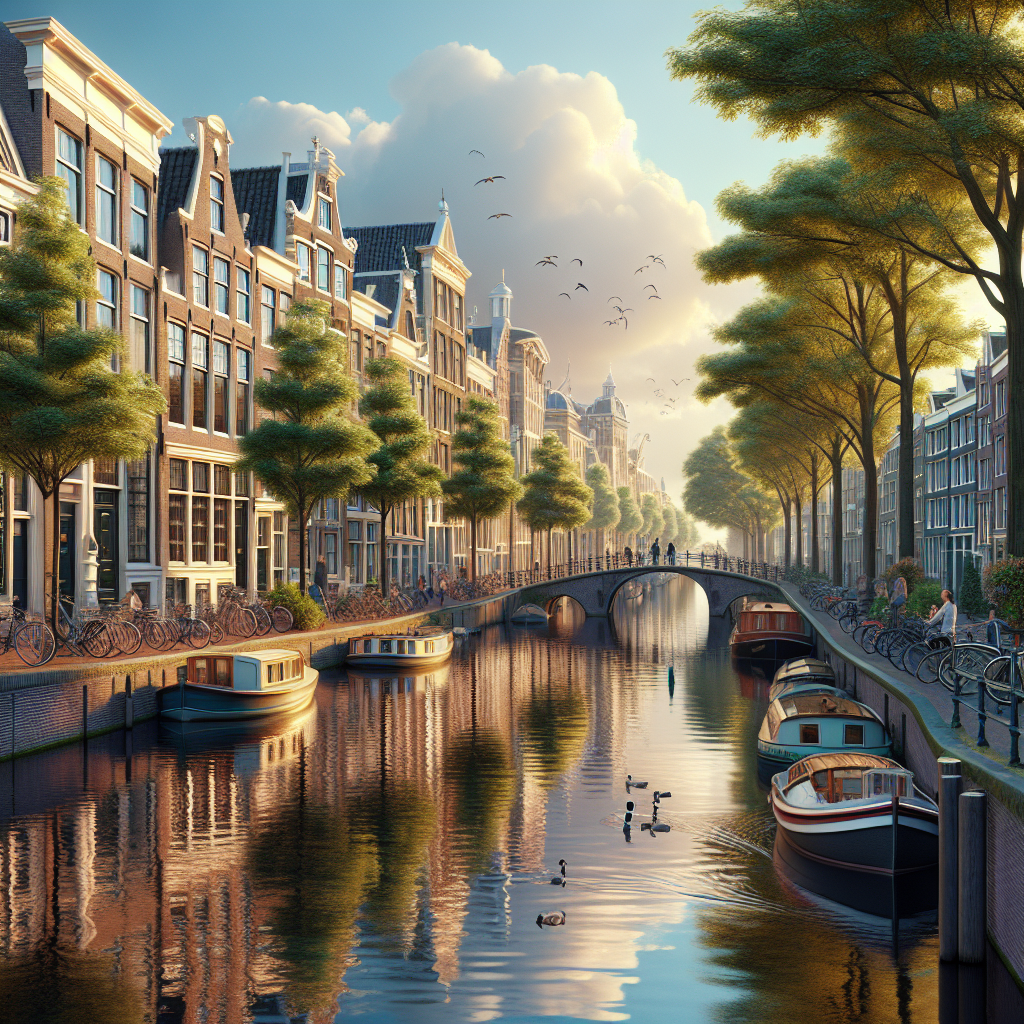Step right up and prepare to be enchanted by the intriguing tale of the Goudsbloemgracht, a now-vanished waterway that once flowed through the heart of Amsterdam, Netherlands. In the seventeenth century, amid the bustling streets and the iconic, flower-adorned canals of the Dutch Golden Age, the Goudsbloemgracht was a vital part of Amsterdam's ever-growing tapestry. If you’re wondering where it is today, spoiler alert: it doesn't exist anymore. But don't despair—this little canal played an important role in the city's history before it was filled in during the 19th century.
A Glimpse into the Past
The Goudsbloemgracht's name may translate to 'Marigold Canal', but whether the marigold flower ever thrived on its banks remains up for debate. What is certain, however, is that this canal was constructed during Amsterdam's rapid expansion in the 17th century, when the city transformed into an epicenter of trade, culture, and innovation.
During this period, known fondly as the Dutch Golden Age, Amsterdam was a hive of commercial activity. Its canals weren’t just waterways; they were the very arteries of the city. So, why exactly was the Goudsbloemgracht filled in? Well, its story is as rich as the history books. As the city grew, so did the demand for space—both for infrastructure and, frankly, people. Come the 19th century, Amsterdam, like so many cities of the time, was looking toward modernization. Enter, the great canal-filling phenomenon!
The Great Transformation
During the late 1800s and early 1900s, Amsterdam underwent significant urban development. The focus was largely on practicality over poetic beauty, leading to many canals, including the Goudsbloemgracht, being filled in to make way for roads, homes, and public spaces. Progress was essential, though one can’t help but feel a tinge of nostalgia for what was lost.
Despite its physical disappearance, Goudsbloemgracht continues to capture imaginations. This raises the fascinating question of how places can continue to live on in the collective consciousness long after they've been altered or erased altogether. In a thriving metropolis like Amsterdam, where history and modernity collide, every stone and every street has a tale to tell—even those whose waters have long since receded.
Marrying the Old and the New
Today, the area that once hosted the Goudsbloemgracht is part of the hip Jordaan district, one of Amsterdam’s most beloved neighborhoods. Known for its artistic flair, quaint streets, and vibrant markets, Jordaan continues to buzz with the spirit of its predecessor.
Now I hear you ask, "Why should you care about a long-gone canal in Amsterdam?" Well, dear reader, the past is never truly gone—it simply shapes the present. The city’s urban planning continues to influence how people navigate and understand Amsterdam. The evolution from the Goudsbloemgracht to today's streets is a lesson in adaptation and the inevitability of change.
Science Behind Urban Planning
Drawing wisdom from history, urban planners around the world study cases like the Goudsbloemgracht to understand the complex needs of modern cities. Core principles involve ensuring sustainable growth, accommodating current societal needs, and fostering community—all while preserving cultural heritage that enriches humankind.
What the Goudsbloemgracht story teaches us is the importance of balancing the dual demands of progress and preservation. While it might be tempting to clear the old for new pathways, historical narratives play an essential role in shaping our identities and enriching our societal fabric.
The Human Touch
Amidst this ever-evolving landscape of cities and canals, it strikes me how human ingenuity and optimism are constant companions. Just like during Amsterdam's famed Golden Age, today's challenges invite innovative, thoughtful solutions that honor both our shared human history and future aspirations. Physical appearances may change, but the spirit of a place, fueled by human stories and endeavors, endures.
Conclusion: An Optimistic Look Forward
As a symbol of Amsterdam's historical layers, the story of Goudsbloemgracht encourages us to approach city development with imagination and respect for what came before. Canals like Goudsbloemgracht might have been forgotten in pavement and cobblestones, yet their impact endures in the spirit of reinvention and growth—a narrative as old as humanity itself.
So, as you wander through the Jordaan district, remember the marigold-hued echoes of this bygone canal. They are a poetic reminder that history is not static but an ongoing journey weaves through us all. Whether observing the bustling commerce of Amsterdam or contemplating the rapid pulse of a modern-day city street, there are hidden stories to uncover and lessons to learn. Enthusiasm, optimism, and the inherent curiosity of human nature will guide you.

